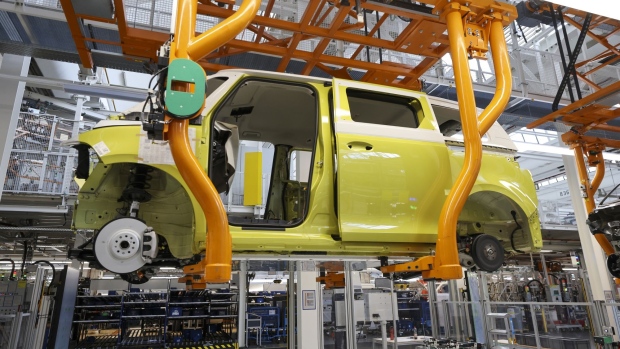Oct 11, 2022
Europe Carmakers Could See Output Plummet by Millions, S&P Says
, Bloomberg News

(Bloomberg) -- European carmakers could see output drop by more than 1 million vehicles per quarter starting late this year and continuing through 2023, as soaring energy costs weigh on the supply chain, according to a report.
Parts shortages and supply bottlenecks are likely to weigh most heavily on automakers from November through spring of 2023, particularly if energy is cut during the colder winter months, S&P Global Mobility said in a report released Tuesday.
“The pressure on the automotive supply chain will be intense, especially the more one moves upstream from vehicle manufacturing,” analyst Edwin Pope said. Factories may have to halt “shipments of completed vehicles due to shortages of single components.”
Governments across Europe are intervening to blunt the impact of the energy crisis, but the measures may not be enough to shield the auto industry from production halts this winter. Just-in-time supply models will also face problems as some suppliers implement energy-efficient shift schedules.
The ensuing parts shortages and bottlenecks could trigger production stops akin to those that occurred during the pandemic and the Russian invasion of Ukraine, according to the report.
S&P had forecast that Europe-based factories would produce 4 million to 4.5 million vehicles per quarter. If energy restrictions are put in place, auto output could drop to as low as 2.8 million per quarter. That would be 4.8 million to 6.8 million units of lost production on an annual basis.
For now, some carmakers are still reporting strong gains. Mercedes Benz AG said Tuesday that sales rose by more than a fifth during the third quarter, despite supply-chain problems, inflation and a souring economic outlook.
The forecast looked at 11 major car production hubs in Europe and ranked them according to which countries are best positioned to endure the expected energy headwinds this winter.
The Czech Republic and Germany came out on top, with Germany in particular benefiting from a relatively low reliance on gas-derived electricity and its current levels of gas storage, according to the report. Factories in Spain, Italy and Belgium face the biggest risks, with all three countries receiving the lowest score on energy self-sufficiency.
(Updates with Mercedes sales in seventh paragraph.)
©2022 Bloomberg L.P.


